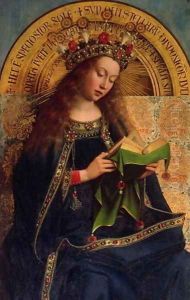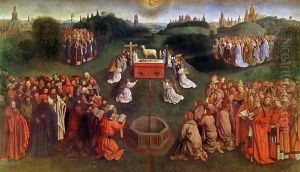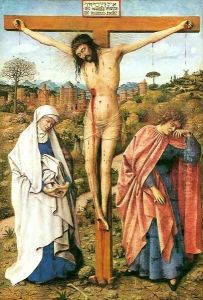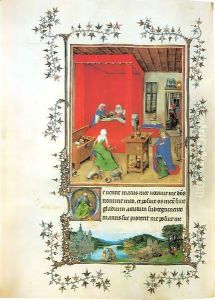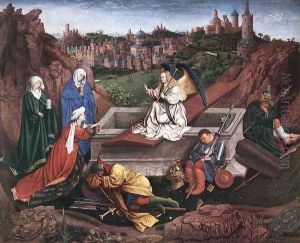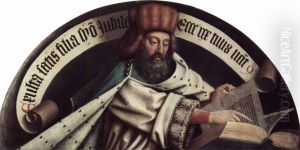Hubert van Eyck Paintings
Hubert van Eyck was a Flemish painter, born in the late 14th century, who played a significant role in the early development of Northern Renaissance art. His exact birthplace is unknown, but it is believed he originated from the region of Maaseik, in present-day Belgium. Little is known about his early life and training, but he is often considered to have been the elder brother of the more famous Jan van Eyck. Both brothers were pivotal figures in the transition from the medieval style of manuscript illumination to the new technique of oil painting.
Hubert van Eyck's most notable work is the Ghent Altarpiece (also known as the Adoration of the Mystic Lamb), which was begun around 1420 and completed by his brother Jan after Hubert's death in 1426. The altarpiece is renowned for its intricate detail and use of light, which was revolutionary for its time. The work was commissioned by Jodocus Vijd and his wife Elisabeth Borluut for the Saint Bavo Cathedral in Ghent, where it still resides today.
Although the Ghent Altarpiece is the only work that has been securely attributed to Hubert van Eyck, his influence is seen in the development of naturalistic representation and the use of oil paints, which allowed for greater detail and a wider range of colors and effects. His brother Jan often receives the bulk of the credit for these innovations, but it is clear that Hubert played an important role in their development and in laying the groundwork for the Northern Renaissance.
Hubert van Eyck's exact date of death is uncertain, but he is believed to have died on September 18, 1426. He was buried in the Church of St. Bavo in Ghent, but his grave was lost during the Reformation. Despite his relatively small body of attributed works, Hubert van Eyck's contributions to early Netherlandish painting have earned him a place of high regard in the history of Western art.
